Everyone loves snowy owls, it seems. All ages!
A week ago I followed through on an invitation from Ms. Rebecca Diemert, a kindergarten teacher at Canadian Martyrs Catholic Elementary School in Kitchener, Ontario, to speak to her students about snowy owls.
A local newspaper had published a story about me and my obsession with snowy owls and, after reading this, Rebecca had emailed me asking if I would be interested in community outreach. Besides reading this article to the kids they had visited my website to look at snowy owls.
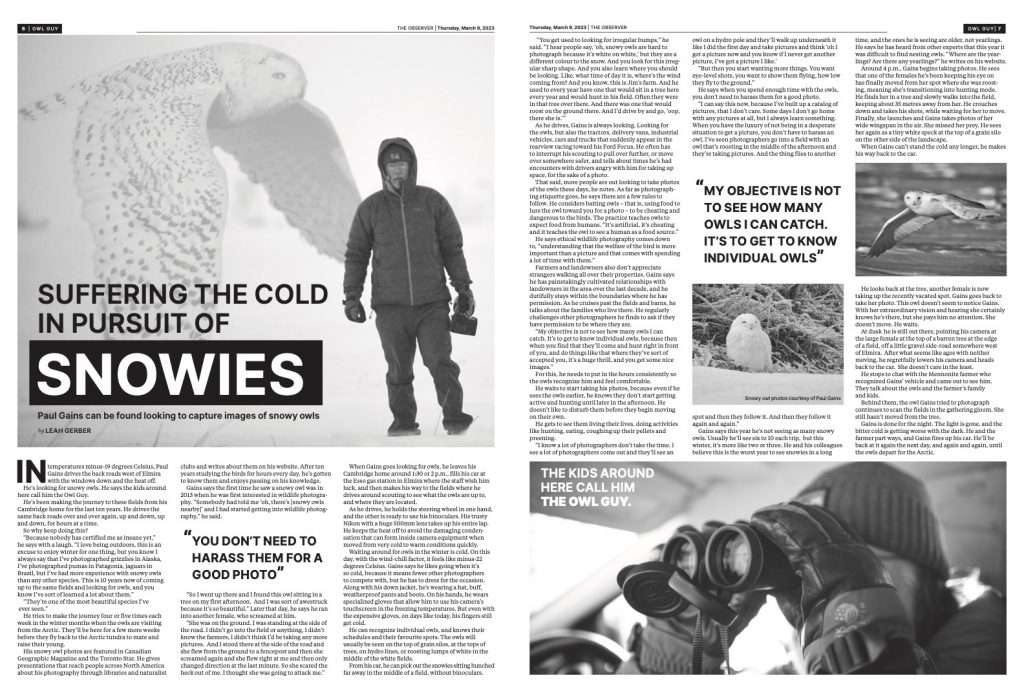
While I have spoken to students before none have been as young as these so I was initially hesitant. Then it occurred to me: here is someone making an effort to promote wildlife conservation which might leave a lasting impression on some of them. So I agreed.
Rebecca’s reaction? Can we invite some other interested kindergarten classes? The more the merrier, I said.
So when I arrived at the school I learned I was going to meet roughly 85 excited children in a very large classroom. While other teachers organized the children Rebecca took me to the bulletin board in the main corridor and showed me their handiwork.
Stapled to the board around the aforementioned newspaper article were some paintings of snowy owls as well as key elements of arctic wildlife, as you can see from the picture below.
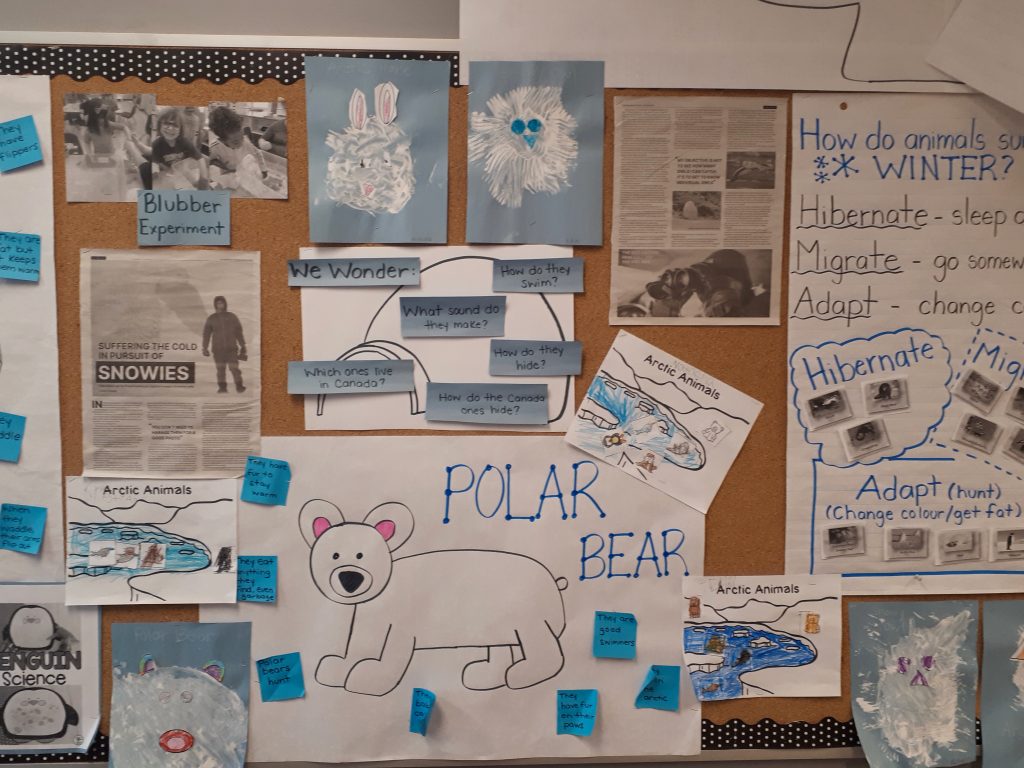
Naturally, I kept the presentation short. One little girl named Ediel raised her hand as soon as I began my presentation. She was ever so keen to ask a question.
“Your arm is going to get tired,” I told her with a smile. “I will let you ask the first question after I show the pictures, ok?” Eventually she asked three.
I had been forewarned that they wondered how I could find owls in the snow. So the first couple of pictures were of snowy owls camouflaged against the snow. I asked if they could spot them. No problem, evidently.
While I am often asked what equipment I use I am not sure the kids were impressed when I showed them my Nikon D500, Nikon 500mm f/5.6 lens and my Vistek Diamondback 8 x 42 binoculars.
Images of snowy owl behaviour – the preening, stretching and fluffing of feathers and some funny faces – went over well, however.
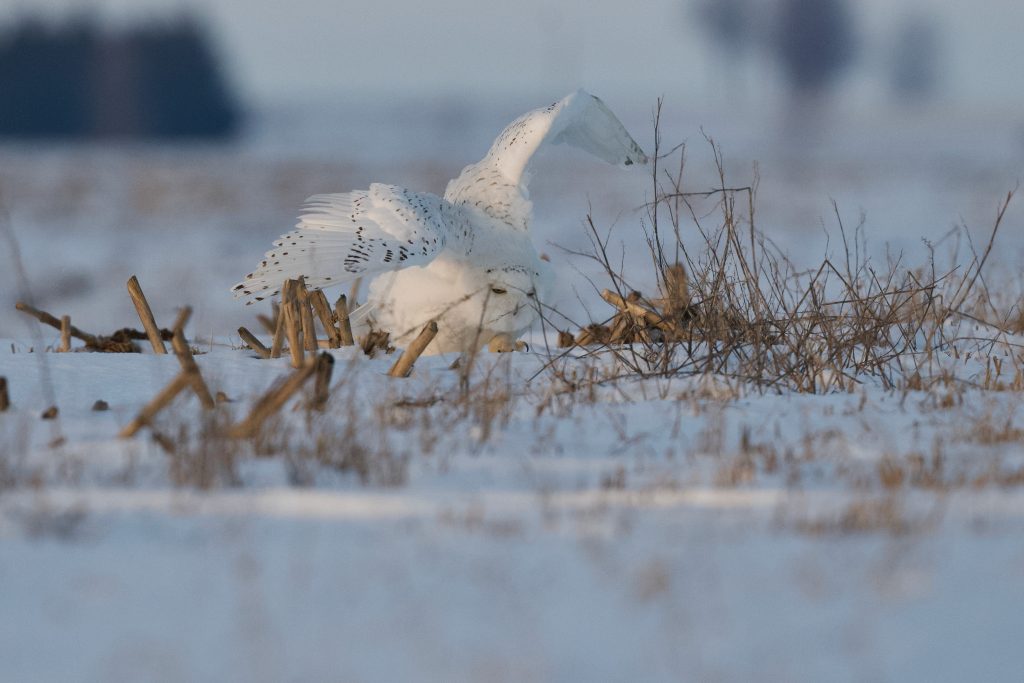
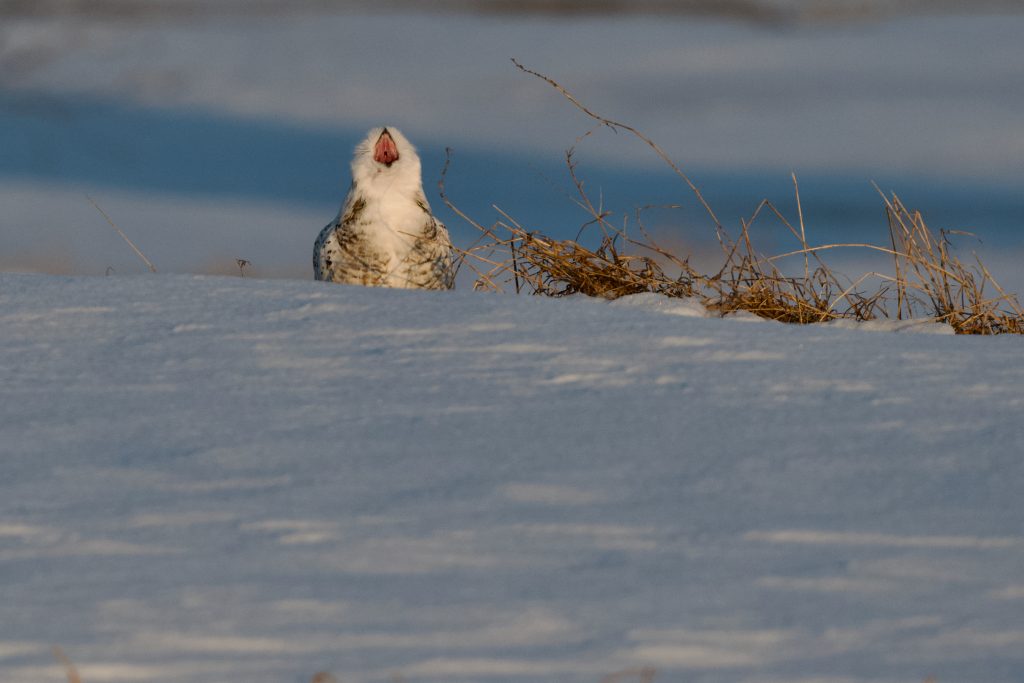
I also included a shot of two male owls ‘not playing nice’ which was a veiled lesson in getting along with each other. The teachers, who must supervise these energetic little ones during recess, might have appreciated that. Of course everyone likes birds in flight so there were a few of those.
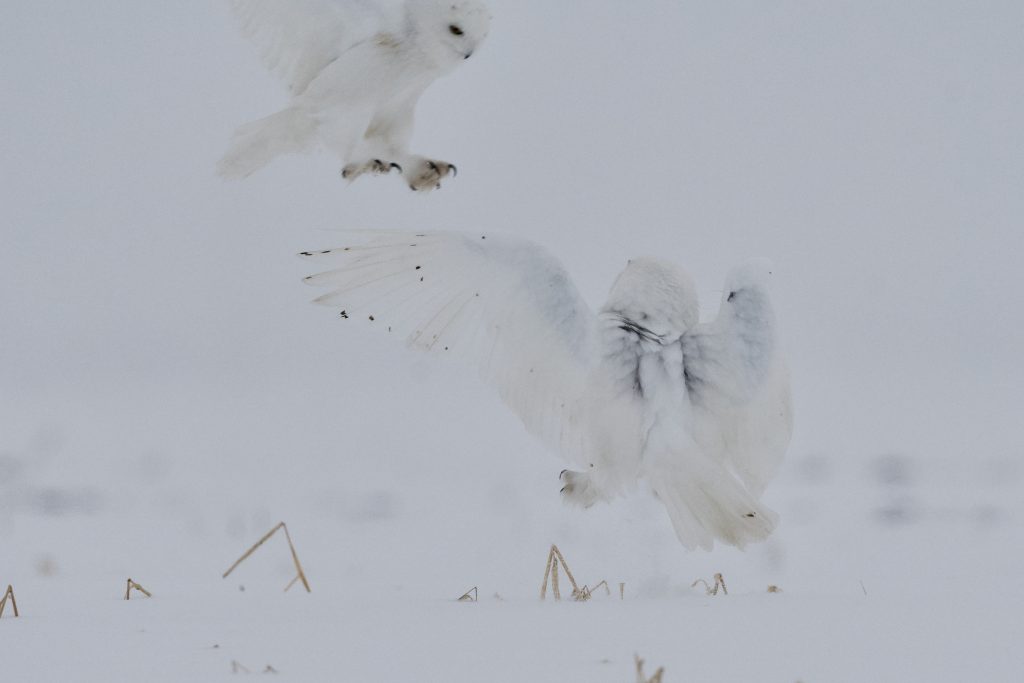
A short while later came the question and answer portion of the afternoon. How high do snowy owls fly? How do you get so close? What do they eat? Eventually we ran out of time.
After receiving a giant ‘thank-you card’ signed by all the children, and a couple of hugs, I headed further north to look for snowy owls…without luck. It appears ‘my owls’ may have begun their northern migration.
As I drove around looking for those owls I thought about my encounter with the children and about the good fortune they have had to be at Canadian Martyrs with teachers like Rebecca Diemert. Their wide-eyed interest in learning about a single species was so heartwarming.
Then, I thought about the latest International Union for the Conservation for Nature news that, of the 140,000+ species of flora and fauna assessed by the IUCN, roughly 28% of them are threatened with extinction.
Snowy owls are listed as ‘Vulnerable’ at the moment with the next stage being ‘Endangered’. Climate change is one of the issues.
The arctic is shrinking, permafrost melting and plants more inclined to grow in boreal forests are appearing where they haven’t before. There is concern that the lemming population – critical to sustaining snowy owls in the arctic – is decreasing too.
Amongst leading snowy owl researchers there is consensus that the winter of 2022/23 has been the worst year for snowy owl numbers in a decade!
And so I wondered, when these children are adults, will they have the opportunity to see snowy owls as we have had? What about other species which we take for granted in and around urban centres?
In Ontario we are losing 320 acres of farmland every day to development. And the Ford government’s offensive decision to sell off protected Greenbelt land to developers reflects poorly on them.
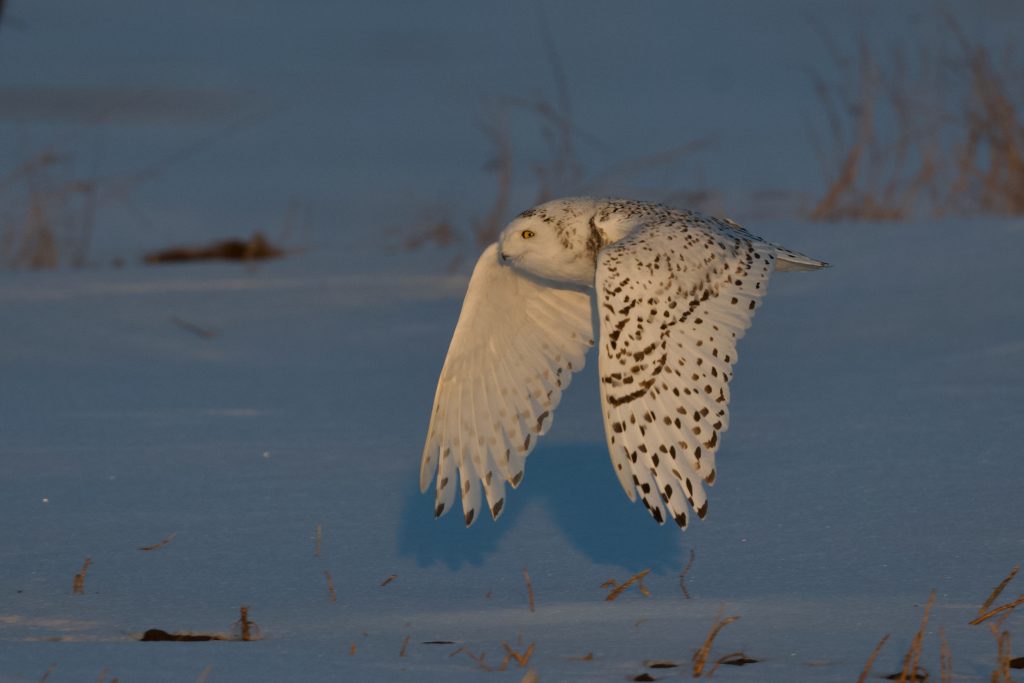
I have a three year old grandson, Raven Jai Gains, who is learning about different wildlife species already. And when I was with him at the park a few days ago we heard a flock of sandhill cranes approaching. They were so high up in the clouds that I had a hard time seeing them. In a clearing they were visible. Raven saw them. Later he proudly told his father ‘we saw sandhill cranes.’
Back in 2005 I had the privilege of interviewing one of the Greenpeace founders, Bob Hunter, who of course was a leading environmentalist.
At the time of my visit to his house – he was dying of prostate cancer. Above the fireplace he had the helm from the original Greenpeace boat mounted. That’s an image I will never forget.
He had written a book warning of the impending peril of climate change ‘2030 – Confronting Thermageddon in Our Time.’ He autographed a copy ‘To Paul and family, Good Luck! Bob”
At the time my kids were very young. So I opined that perhaps the way to get people to act more swiftly on climate change was to include discussion in the school curriculum. Then he told me that his son worked in the Ottawa school system and had tried that – only to be thwarted by the interests of political donors. I am glad to see that things have changed almost twenty years later.
The work that teachers like Rebecca Diemert and her colleagues do on a daily basis can’t be underestimated. I am quite sure a significant portion of our population could care less about wildlife species let alone arctic birds.
But I am encouraged when I see 85 kindergarten kids beginning to understand that we are part of nature.
-30-
Once again I’d like to invite folks to my April 20th presentation ‘Predators – Life in the Wild.’
It’s at Idea Exchange (The Old Post Office) 12 Water St. S, Cambridge.
Although this in-person event is free to attend registration is required. That’s so organizers can prepare seating.
If you are interested please cut and paste this into your browser:
https://ideaexchange.libnet.info/event/8192141
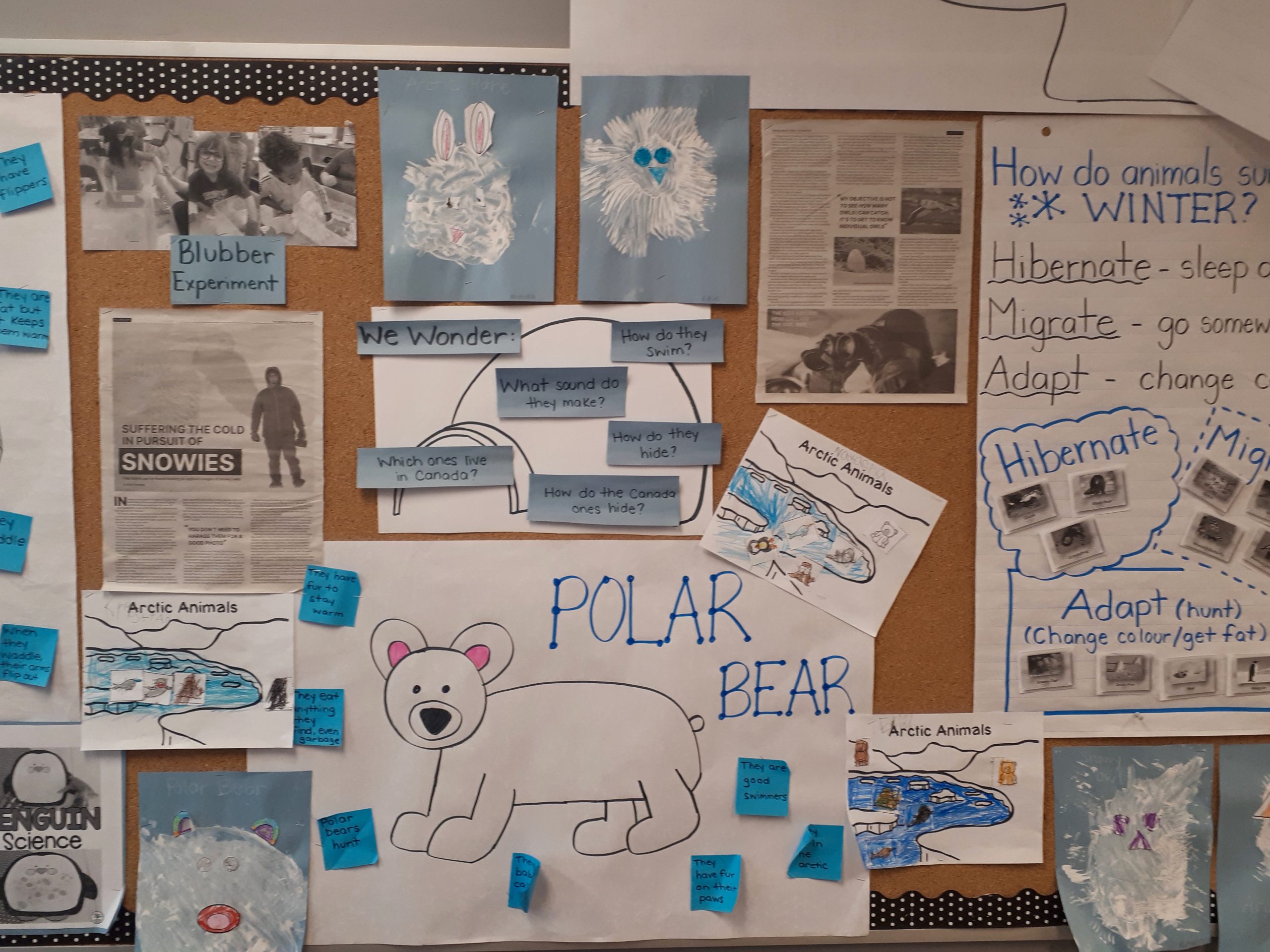
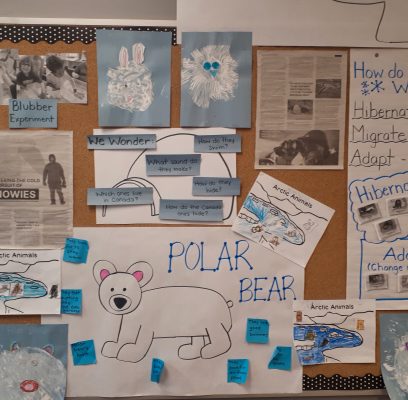
Well done, Paul. Kudos to Rebecca Diemert for arranging your presentation and for sparking an interest in Arctic animals in her students. That is one impressive bulletin board! Also, I enjoyed the article in the Observer. I’m going to call you “the Owl Guy” from now on.
Hey Jerry, I hope my grandson winds up as fortunate as those kids – mentored by teachers who care about nature. Leah Gerber was the author of that story. The day I invited her to join me was the coldest day of the winter…..-19C with the wind chill in the -24C range. Brutal. Baptism by fire, eh? Very bold of her.
Good for you< Paul, to have the opportunity to present your show to kindergarten children, Hopefully, most of them have retained their sense of wonder. And hopefully, you have planted a small seed of respect and appreciation for nature. You really can't tell what a small gesture of kindness and tenderness towards nature, may have on their development of respect towards nature years down the road. They are our future. We need to raise them well
Thanks Daniel, I think the seed has been planted by Ms. Diemert and her colleagues who really prepared an excellent study unit on the arctic. I hope other teachers are so inspired! Cheers!
Hi Paul:
Thank God for teachers like Rebecca Diement for having a interest in teaching her young class of impressionable children about Arctic nature. The young children soak it up like a sponge.
Over the last few years going every January looking for Snowy’s passing the different farms and seeing a Snowy on a hydro pole and young children looking up to see them ,so glad to see that the young are intrested. We are blessed to live on a farm property with hardwood and swamp area. Our 3 grandchildren have really learn to appreciate it too. Keep up your great photography and teachings. See you April 20.